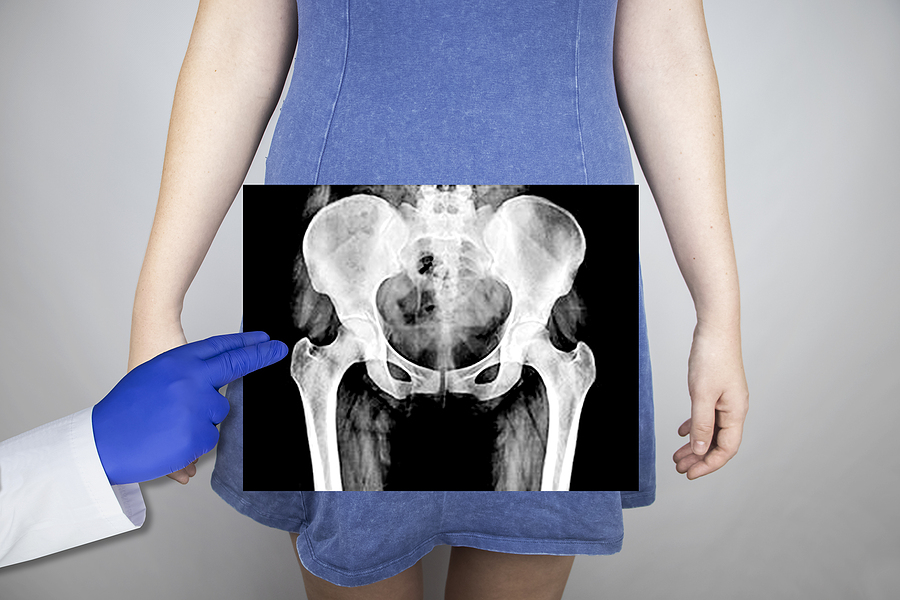The longest ever study of bone density in women gives us insight we haven’t had before.
This research began in 1989 in Finland with around 2700 women aged 47 to 59. The aim was to track bone loss over 25 years and to identify what affects it.
Every five years until 2014 the women had a bone scan and completed a questionnaire on their health, lifestyle and medications.
By 2014 only 686 remained in the study. The rest had dropped out for a variety of reasons, including health issues and needing to go into care. By then the oldest women were in their early 80s.
Bone density readings are most often taken from two sites — the hip and lower spine — but these researchers focused on the hip because degenerative changes in the spine can make it harder to develop a clear picture of bone density over time.
This might be obvious, but when we say that someone has broken a hip, what has usually fractured is the neck of the femur or femoral neck.
Your femur is your thigh bone. You can see it in the image above. When it reaches the nobbly part where the fingers are pointing, there’s a short section that slopes inwards to the ball and socket of the hip joint. That section is the neck of the femur.
In this study the participants lost an average of 0.4 per cent from this area each year for 25 years, a total of around 10 per cent.
Since previous research over 15 years had suggested that the likely rate of loss was about 1.6 per cent per year, this was quite a bit less.
While the women still involved in the study by 2014 were probably healthier than the rest and didn’t reflect most women their age, the findings over 25 years are still valuable.
At the start, 1.6 percent of women had been diagnosed with osteoporosis; 25 years later it was 12.2 per cent.
Over that time they lost an average of 3.4 cms in height and gained about 1.5 kgs in weight, which is surprisingly little and probably reflects that into their 80s some women were losing weight.
It’s not clear how many used medications to build or preserve bone, but of those still participating at the end, almost 24 per cent had used hormone replacement at some stage.
They’d used it on average for about five-and-a-half years, but the women with least bone loss had used it for longer.
While this doesn’t prove that hormone use reduced bone loss, since estrogen helps with bone retention it probably did.
Hormone replacement was in and out of favour during the years of this study, and we don’t have any details about the way it was administered or the dosages.
Women with the least bone loss were also more likely to take calcium and vitamin D, which contradicts some studies that don’t show a reduction in fractures with supplements. But given Finland’s long dark winters, it’s likely many women at least needed extra vitamin D.
Another factor that appeared to slow bone loss was weight gain.
The women who lost the least bone started with a ‘normal’ BMI (which is based on weight and height) but over time gained a little more than other women.
To put this in perspective, while obesity is a risk factor for falls and hip fracture, it doesn’t pay to be too thin either. When it comes to bone, there’s merit in carrying a bit extra.
Interestingly, women with higher bone density at the start of the study lost more bone over the 25 years, perhaps due to genetic or lifestyle factors.
While we can’t directly translate a Finnish study to Australia, it gives us three useful takeaways.
One, it showed that bone loss was steady. Maybe we can use the loss rate of 0.4 per cent per year at the femoral neck as a guideline, so if our scans show that we’re losing much more, it’s worth trying to identify possible sources of that.
Two, there seemed to be a relationship between less bone loss and the use of hormone replacement, taking calcium and vitamin D, and carrying a little extra weight. Remember though that other evidence suggests calcium and vitamin D supplements are only useful if you’re deficient in either.
And three, women with higher bone density in middle-age lost more bone over time. So if you’re in your 50s and worried that your bone density is low, take heart and pay attention to your lifestyle. A lot can change over 25 years.
Photo Source: Bigstock

